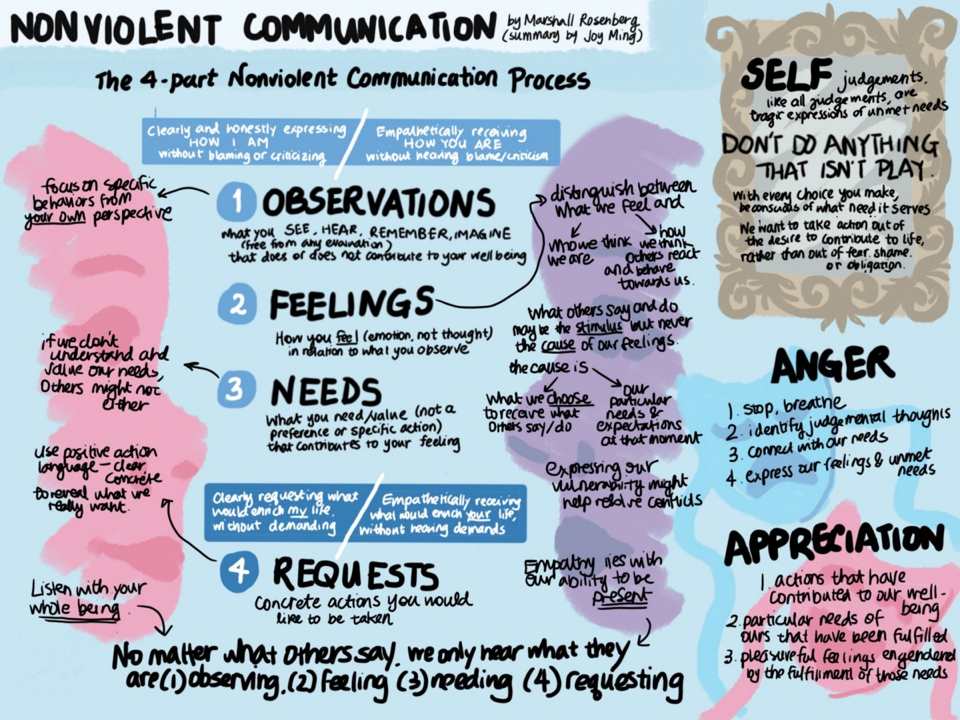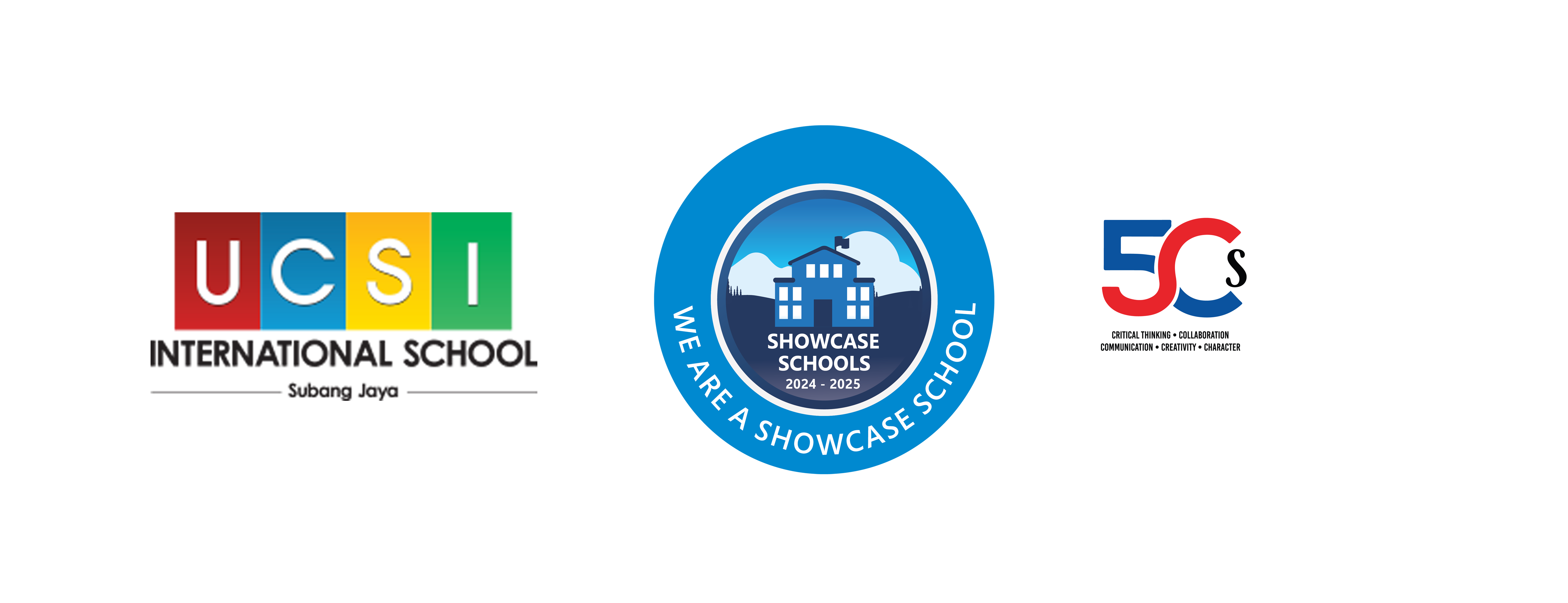Non-Violent Communication
Marshall Rosenberg’s Non-Violent Communication – A Summary by Joy Ming
Marshall Rosenberg’s seminal work Non-Violent Communication: A Language of Life, is a highly acclaimed best seller that still continues to be utilized as a powerful tool to help people effectively resolve conflict.
The 4 components of Rosenberg’s Non-Violent Communication are summarized as a mind-map by our very own Joy Ming. Emphasizing Non-Violent Communication as a component of emotional intelligence, this mind-map synthesizes the key points for easy understanding focusing on effective strategies for meeting fundamental needs of all parties in a conversation.
The 4- part Non-Violent Communication process also known as Giraffe language, emphasizes Observations, Feelings, Needs and Requests which present themselves with OWNERSHIP, clearly expressing who we are without blame and or criticism and EMPATHY, empathetically receiving who you are without hearing blame or criticism.
The mind-map also highlights: the detriment of SELF JUDGEMENT which is an offspring of unmet needs; steps to identify and neutralize ANGER by connecting with our needs and expressing our feelings; APPRECIATION, by recognizing the actions we take to experience the pleasure of needs that are fulfilled.
The impact of Non-Violent Communication fosters intrapersonal and interpersonal communication with compassion and empathy, that respects the needs of all parties in the dynamic.
UIS Subang Jaya would like to give a huge congratulations to Joy Ming for artfully putting together the pieces in a user-friendly way. It is a useful aid to those of us wishing to communicate better and minimize conflict. Much needed in these hypersensitive times. Emotional intelligence is very much a 21st century skill that is emphasized here at UIS Subang Jaya.

